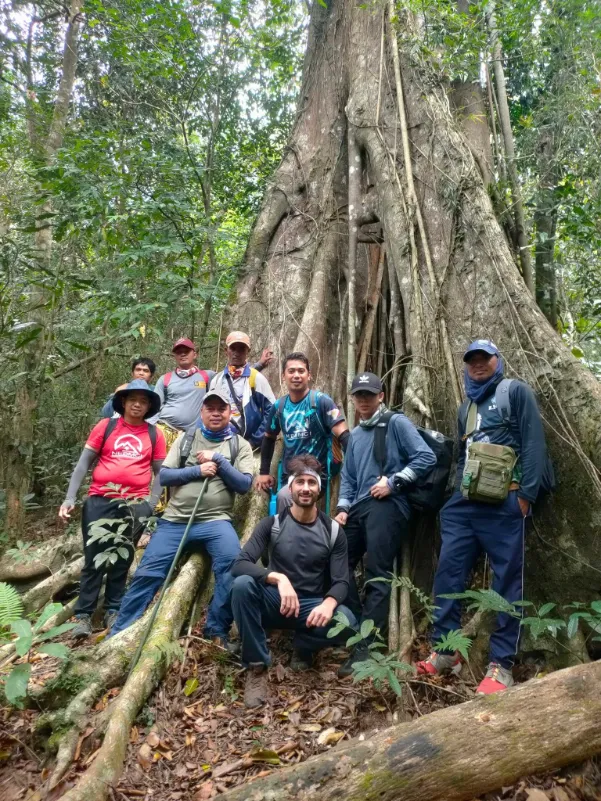Exploring Parasitic Plants with Top Botanists – Discover Rafflesia with Experts
Embarking on a research expedition is always an exhilarating experience, especially when it involves exploring the enigmatic world of parasitic plants alongside leading experts in the field.
The Nueva Ecija Backpackers and Mountaineers Community Inc. is privileged to collaborate with Dr. Chris Thorogood from Oxford University and Professors Pat Malbrigo and Andrian Tobias from the Department of Forest Biological Sciences at UP Los Baños.
Our goal is to delve deep into the secrets of two extraordinary parasitic species: Rafflesia ponchoana and Rafflesia consueloae, both unique to the Philippines, particularly in Nueva Ecija.
The Nueva Ecija Backpackers and Mountaineers Community Inc. is privileged to collaborate with Dr. Chris Thorogood from Oxford University and Professors Pat Malbrigo and Andrian Tobias from the Department of Forest Biological Sciences at UP Los Baños.
Our goal is to delve deep into the secrets of two extraordinary parasitic species: Rafflesia ponchoana and Rafflesia consueloae, both unique to the Philippines, particularly in Nueva Ecija.
What Makes Rafflesia Unique?
Rafflesia, known for producing the world’s largest flowers, poses intriguing questions about plant evolution and adaptation. These flowers can reach up to a meter in diameter and emit a strong odor reminiscent of decaying flesh, earning them the nickname “corpse flowers.” This scent is a clever adaptation to attract pollinators such as flies and beetles. What sets Rafflesia ponchoana and Rafflesia consueloae apart is their rare occurrence and highly specialized life cycle.
Parasitism in Plants
Unlike most plants, Rafflesia species do not photosynthesize. They are obligate parasites, meaning they completely depend on a host plant to survive. Their host, the Tetrastigma vine, is critical to their lifecycle. The Rafflesia embeds itself in the vine’s tissues, drawing nutrients and water essential for its growth. This intricate relationship showcases a fascinating aspect of ecological interdependence.
Research Objectives
Our research aims to understand better the ecological and genetic factors that enable Rafflesia to thrive. By studying their propagation and interaction with their host, we hope to uncover how these plants influence and are influenced by their ecosystems. This knowledge is crucial for conservation efforts, especially as these species are threatened by habitat destruction and climate change.
Field Experiences
Being in the field offers an unparalleled opportunity to observe these plants in their natural habitat. The dense forests of Nueva Ecija provide a backdrop for learning and discovery. We trek through the challenging terrains to reach our research sites, assisted by the expertise and guidance of the Nueva Ecija Backpackers and Mountaineers Community Inc. This local group plays an essential role in the expedition, helping navigate the complex landscapes and sharing their deep understanding of the local ecology.
Importance of Collaboration
Working with Dr. Thorogood, an expert in plant morphology, and Professors Malbrigo and Tobias, who specialize in forest biological sciences, enriches the research experience. Their mentorship offers a unique blend of theoretical knowledge and practical skills, paving the way for breakthroughs in understanding parasitic plants. This collaboration advances our scientific knowledge and fosters a community of learners and protectors of the environment.
Conclusion
Exploring the mysteries of Rafflesia is more than a scientific endeavor; it’s a journey into understanding biodiversity and the delicate balance of our ecosystems. Through this research, we aim to contribute to global conservation efforts and share the fascinating world of parasitic plants with the broader community. Engaging with these hidden wonders of nature reminds us of the incredible complexity and interconnectedness of life on Earth.
